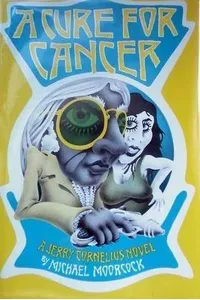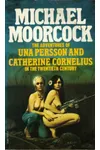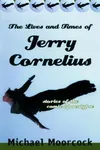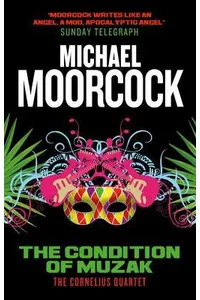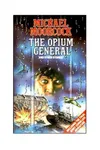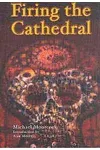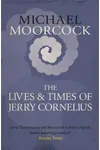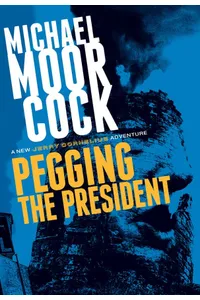Step into the kaleidoscopic chaos of the Jerry Cornelius series, where time bends, identities shift, and the world is a psychedelic playground for a shape-shifting anarchist! Created by Michael Moorcock, this genre-defying saga blends science fiction, fantasy, and avant-garde flair, following the enigmatic Jerry Cornelius—a hipster, assassin, and eternal trickster—through surreal, apocalyptic landscapes. With a wink to the 1960s counterculture, these books are a wild ride that still captivates readers today.
Unlike traditional heroes, Jerry is a chameleon of chaos, dodging authority and weaving through alternate realities with a needle-gun in hand and a playlist of Beatles and Pink Floyd tunes in his head. Ready to explore a world where nothing is quite as it seems? Let’s dive into the vibrant, anarchic universe of Jerry Cornelius!
How Jerry Cornelius Began
In the mid-1960s, Michael Moorcock, a titan of speculative fiction and editor of New Worlds magazine, unleashed Jerry Cornelius onto the literary scene. Inspired by the era’s countercultural energy and his own Eternal Champion concept, Moorcock crafted Jerry as a modern, anarchic antihero—a far cry from his sword-and-sorcery Elric. First appearing in The Final Programme (1968), Jerry embodied the rebellious spirit of swinging London, blending spy-thriller vibes with surreal, experimental storytelling. Moorcock’s goal? To break narrative rules and let readers’ imaginations run wild, drawing from influences like William S. Burroughs and the Commedia dell’Arte.
The Heart of Jerry Cornelius
The Jerry Cornelius series, often called the Cornelius Quartet, kicks off with The Final Programme (1968), where Jerry battles his brother Frank to save their sister Catherine, only to merge with the villainous Miss Brunner into a messianic, hermaphroditic being. A Cure for Cancer (1971) ups the ante, with a black-skinned, white-haired Jerry wielding a vibragun in a post-apocalyptic London that’s part James Bond, part Hieronymus Bosch. The English Assassin (1972) sees Jerry unraveling in a fragmented Europe, while The Condition of Muzak (1977), which won the Guardian Fiction Prize, reveals his exploits as the fantasies of a confused teenager—a bold, existential twist.
These novels defy genre, mixing science fiction, fantasy, and avant-garde experimentation. Set in a multiverse of collapsing societies, they tackle themes of identity, entropy, and rebellion. Jerry’s fluid gender and reality-hopping adventures reflect the 1960s’ social upheaval, with Notting Hill as a vibrant backdrop. Packed with pop culture nods—think Pink Floyd and Hawkwind—the series is a literary acid trip, both chaotic and meticulously crafted, inviting readers to question reality itself.
Why Jerry Cornelius Resonates
The Jerry Cornelius series left an indelible mark on speculative fiction, influencing creators like Alan Moore, Grant Morrison, and even Mick Jagger. Its New Wave approach—blending high art with pop culture—paved the way for cyberpunk and postmodern storytelling. By embracing open-source creativity, Moorcock allowed other writers, like Brian Aldiss and Mœbius, to play in Jerry’s universe, making it a cultural touchstone. Its blend of satire, anarchy, and existential musings still feels fresh, resonating with readers who crave unconventional narratives.
About Jerry Cornelius
- Publication Years: 1968–1977 (main tetralogy), with later stories up to 2018.
- Key Books: The Final Programme, A Cure for Cancer, The English Assassin, The Condition of Muzak.
- Awards: The Condition of Muzak won the 1977 Guardian Fiction Prize.
- Setting: A multiverse centered in Notting Hill, London, with apocalyptic and psychedelic vibes.
Dive into The Final Programme and join Jerry Cornelius on a mind-bending journey through a world where chaos reigns and rules are made to be broken!

